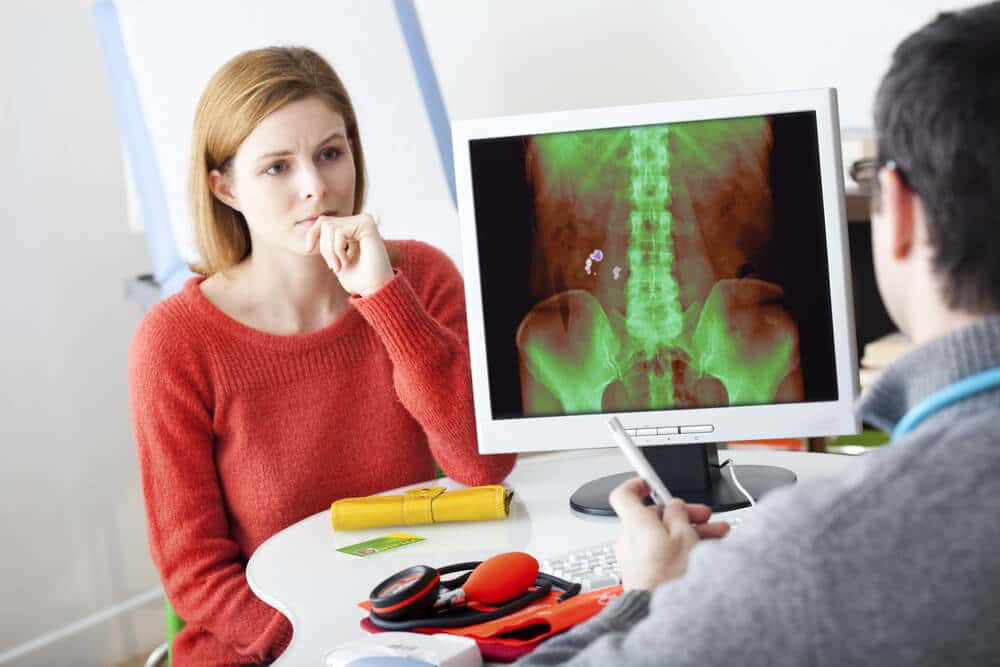Can women get kidney stones? Unfortunately, the answer is yes. In short, more and more women are being diagnosed with these complex formations that tend to develop in the kidneys due to higher concentrations of substances such as oxalate, calcium, uric acid, and phosphorus in the urine.
Kidney stones may vary in density, shape, location, and color. For instance, they might be as tiny as a grain of sand, while others can snuggly fit in the palm of an adult person’s hand.
In this article, we’ll strive to give a detailed answer to the question “can women get kidney stones,” talk about the risk factors for kidney stones, and explore prevention options as well.
On that end, if you are looking for urinary stone treatment in Tarmac, Florida, feel free to reach out to us after reading this article.
Kidney Stone Misconceptions and How These Formations Affect Women
Can even women get kidney stones – actually, the single largest misconception regarding this topic is that many people out there think these calcified formations only affect men. As a matter of fact, around 11% of men and approximately 6% of women are diagnosed with them at some point in their lives, and the gender gap seems to be closing as more and more women are diagnosed with them each year.
Indeed, a lot of this has to do with technological advancements. Imaging technology has become so sophisticated and sensitive that it can detect even the tiniest, symptom-free formations. On the other hand, the growing trend in kidney stones in women may also be contributed to the ongoing obesity problems.

Women and Kidney Stones
Even though ladies have a lower lifetime risk of developing kidney stones, diabetes, different metabolic syndromes, and obesity have all managed to narrow the gap.
Pertaining studies also show that women between the ages of 18 and 39 are the most prone to develop kidney stone symptoms and that women also have higher chances of developing infected kidney stones because of recurrent problems with UTIs or urinary tract infections.
On the other hand, some experts even believe that women are even at a greater risk of developing kidney stones if they are overweight or obese. Furthermore, the stones might even be more complex and more challenging to address medically adequately. Additionally, the before-mentioned UTIs and the pain from the kidney stones may dramatically impact the female patients’ quality of life.
Risk Factors for Kidney Stones
So, let’s see the most prominent risk factors for kidney stones in women. As mentioned before, metabolic conditions, diabetes, obesity, and living a sedentary lifestyle can all increase the risks of developing these formations.
Surprisingly, there’s one more thing that researchers speculate might boost the chances of developing kidney stones: climate change.
According to experts, drier and hotter climates, like the South and the Southeast in the US, have a higher prevalence of kidney stone problems and patients who are dealing with these formations. These experts also state that heat is a known risk factor and inadequate fluid intake.
Kidney Stone Symptoms
As we also discussed above, tiny stones will have no problem passing through the urinary tract and leaving the body unnoticed. Still, other, larger stones will most probably produce pretty apparent symptoms, most noticeably, pain.
When it comes to symptoms, both genders will experience:
- Pain in their sides
- Back Pain
- Pain that radiates into the groin area
- Vomiting
- Nausea
- Fever
- Blood in urine
- In the case of women, kidney stones may also lead to chronic urinary tract infections
Kidney Stone Treatment
The first and most crucial step in treating kidney stones is getting an accurate diagnosis and pinpointing the exact location and size of the formation.
In most cases, the pain is actually a result of the stone blocking the kidney’s collecting system, so the urine is unable to pass by, and the aim of the treatment should be to reduce the pressure the kidney has to deal with.
First, experts will usually recommend medication to reduce the inflammation and pain to see whether the stone will pass without any assistance. If it stays, doctors will use further treatment options to reduce the risk of infection and pressure in the kidneys.
Expulsion Therapy
For smaller stones in the tube that carries the urine from the bladder to the kidneys (the ureter), patients may opt for medical expulsion therapy, where medications are taken to smooth and relax the muscle in the ureter and enable the stone to pass into the bladder.
Shock Wave Lithotripsy
Patients are administered general anesthesia during shock wave lithotripsy, and doctors target the stones with high-energy sound waves. The waves can break up the formations into small pieces that can then pass. There’s no need for incisions since the waves are launched outside the body. In essence, shock wave lithotripsy is a good alternative when there are only a few softer stones in non-dependent locations.
While this is a low-risk procedure, it’s less precise than other procedures, and patients will have to pass the smaller stone debris on their own.
Ureteroscopy or Laser Lithotripsy
Regarding kidney stone treatments, ureteroscopy is the most common method. Patients are administered general anesthesia, and healthcare professionals insert a small instrument in the urethra without any incisions being made. The doctor will simply guide the device to the location of the stone and passes a laser beam through the instrument (scope), which will break the stone that can then be flushed out via the ureter or removed.
Ureteroscopy is a great way to eliminate several stones that are in more challenging locations.
Percutaneous Nephrolithotomy
During percutaneous nephrolithotomy, doctors make a tiny incision in the area of the back to enter a camera into the kidney along with a device that will fragment and retrieve the stones.
This is the most recommended treatment option for removing complex and large or irregularly shaped formations because the doctors are able to approach the kidney from several different angles and directions.
Prevention is Key
The problem is that once a patient develops a kidney stone, the chances of it developing again become higher. So, what to do?
Experts recommend making sustainable lifestyle and dietary changes in the long term to reduce kidney stone recurrence. Working closely with dieticians and other experts can help you work out a personalized plan you can easily follow.
Reducing sodium intake to 2,300 milligrams per day and increasing fluid intake along with citric acid can also help a great deal. Also, eating more veggies and fruits and limiting animal proteins will also help in avoiding the recurrence of kidney stones.

Smart Decisions Start With Clever Help
Some kidney stones cause no problems and will pass on their own, while others can cause extreme pain and require medical attention. Also, after receiving a diagnosis, patients should make corresponding dietary and lifestyle changes to avoid having to deal with recurring stones.
On that end, getting the best professional help is any patient’s best bet to making a full recovery. Whether you are also looking for treatment options or dietary guidance, Dr. Krinsky is more than happy to help you.


